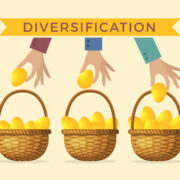Understanding the Self-Directed Solo 401(k) Plan
When it comes to retirement planning, Self-Directed Solo 401(k) plans are often one of the best options available to investors. Unfortunately, they are often misunderstood. In this article, we’ll look at the common myths around Solo 401(k) plans. Hopefully, we can demystify the Solo 401(k) plan so it’s easy to understand—as well as making sense of why so many investors flock to this retirement account.
Self-Directed Solo 401(k)s Give You Options for Diversifying Your Retirement Portfolio
A Self-Directed Solo 401(k) retirement plan is an account that can hold a variety of different investment options. Many people automatically think of stocks and bonds when it comes to retirement savings. However, these accounts can include a variety of other options including real estate, private companies and precious metals. A Solo 401(k) gives you the freedom to invest in anything that you want, as long as it falls within the legal parameters set forth by the IRS.
401(k) plans are great retirement savings vehicles, but how do you make sure you’re making the best investment choices? One way to answer that question is by looking at the types of options available to you. A Self-Directed Solo 401(k) allows you to invest in a greater variety of options than other 401(k) plans, which allows you to focus on your specific expertise or experience, if you so choose. As mentioned, you can invest in a Solo 401(k) in a variety of ways, including real estate, tax liens, private placements, limited partnerships, and more.
If you have specific expertise in one of these fields, a Self-Directed Solo 401(k) plan can do a lot to help you move forward with your retirement plan. In short, Solo 401(k) plans give you more options for diversifying your retirement portfolio than the traditional approach.
Self-Directed Solo 401(k) Plans Have High Contribution Limits
Thinking about using a Self-Directed Solo 401(k) plan for your retirement savings? You might be interested in knowing that participants have the option to contribute a large amount per year. This number frequently changes, but is typically many times the contribution limit of, say, a Roth IRA.
Over time, that can add up to a lot of money in a retirement account, which is why maximizing this account can help you reach your retirement goals faster.
Self-Directed Solo 401(k)s Can Help You in Self-Employment
Solo 401(k) plans can be used not only for business owners but for self-employed individuals as well. For example, a self-employed individual can establish a Self-Directed Solo 401(k) plan and contribute to it on a tax-deferred basis. Thereby, growing a retirement portfolio by investing into alternative assets such as real estate, private equity, and precious metals. As a result, it is a great way to diversify your retirement portfolio and invest your retirement money into assets that you can control.
For the self-employed, it’s not always easy coming up with ways to add a lot to a retirement account. It can seem difficult, particularly when you have irregular income due to the shifting profits from a business. But if you do approach a Self-Directed Solo 401(k) plan the right way, you can put aside a lot of money for retirement. Beyond that, you can use it to diversify a retirement portfolio, build a more ambitious retirement nest egg, and give yourself security for retirement.
Interested in learning more about Self-Directed IRAs? Contact American IRA, LLC at 866-7500-IRA (472) for a free consultation. Download our free guides or visit us online at www.AmericanIRA.com.










